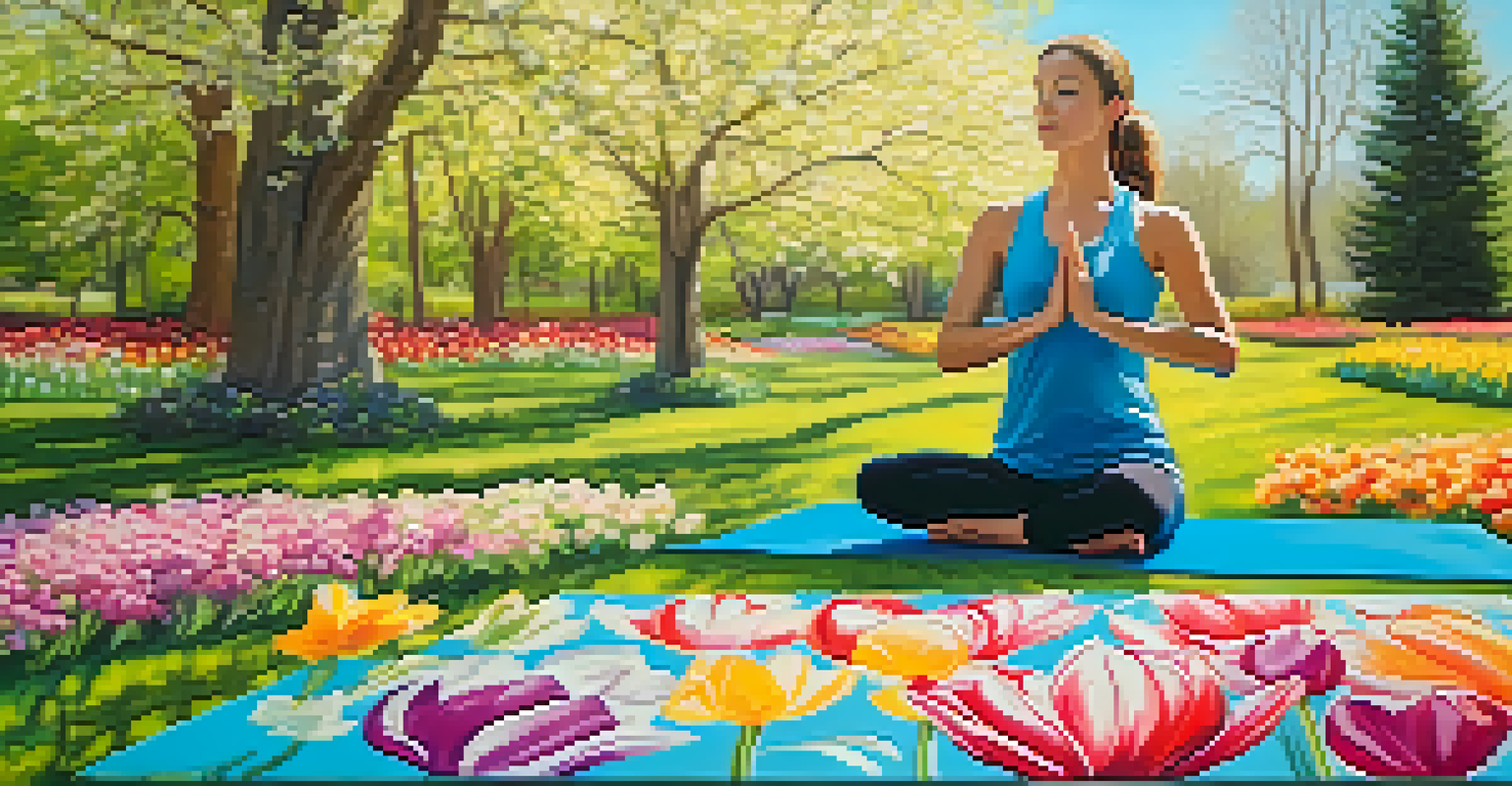The Connection Between Seasonal Changes and Anxiety Disorders

How Seasonal Changes Affect Our Mood and Mindset
Seasonal changes can significantly influence our mood and mental state. As the seasons shift, so do our daily routines, exposure to sunlight, and social interactions. For many, this can lead to feelings of sadness or anxiety, particularly during the transition from summer to fall.
The greatest weapon against stress is our ability to choose one thought over another.
The lack of sunlight during shorter days can disrupt our circadian rhythms, leading to changes in sleep patterns and energy levels. This disruption can exacerbate feelings of anxiety, making it harder to cope with daily stressors. In fact, research has indicated a strong correlation between seasonal changes and mood disorders, showing that many individuals experience heightened anxiety during specific times of the year.
Understanding these seasonal patterns can help us anticipate feelings of anxiety and develop coping strategies. By recognizing that these emotional shifts are often temporary, we can better prepare ourselves to navigate the challenges that come with seasonal changes.
The Science Behind Seasonal Affective Disorder (SAD)
Seasonal Affective Disorder (SAD) is a type of depression that typically occurs during the fall and winter months when daylight hours are shorter. This condition is characterized by symptoms such as low energy, irritability, and heightened anxiety. The exact cause of SAD isn't fully understood, but it's believed to be linked to changes in sunlight exposure.

During the fall and winter, reduced sunlight can lower serotonin levels in the brain, a neurotransmitter that helps regulate mood. This drop can contribute to feelings of sadness or anxiety, creating a cycle that can be challenging to break. For those who suffer from SAD, understanding this connection can be the first step toward seeking help.
Seasonal Changes Impact Mood
Seasonal transitions can lead to feelings of sadness and anxiety due to changes in sunlight, routines, and social interactions.
Treatment options for SAD often include light therapy, medication, and counseling. By shining a light on the issue—literally and figuratively—individuals can find relief from their symptoms and regain a sense of normalcy during the darker months.
How Seasonal Changes Trigger Anxiety Symptoms
For many people, seasonal changes can trigger or exacerbate anxiety symptoms. This can be especially true for individuals with pre-existing anxiety disorders. The unpredictability of weather changes and the pressure of holiday seasons can heighten feelings of stress and anxiety.
In the midst of winter, I found there was, within me, an invincible summer.
During transitions to colder months, the shift in daily routines—like reduced outdoor activities and social events—can contribute to feelings of isolation. This change can leave people feeling disconnected, which can intensify anxiety symptoms. It’s essential to recognize these patterns to better manage mental health during these times.
Identifying specific triggers related to seasonal changes can empower individuals to take proactive steps. Creating a plan to stay socially connected and engaged during these months can alleviate some of the anxiety that arises during seasonal transitions.
The Role of Routine in Managing Seasonal Anxiety
Establishing a consistent daily routine can be a powerful tool in managing anxiety, especially during seasonal changes. Routines create a sense of stability and predictability, which can be comforting during times of uncertainty. Incorporating regular physical activity, healthy eating, and mindfulness practices can make a noticeable difference in mood and anxiety levels.
For example, taking short daily walks outside during daylight hours can help combat the negative effects of reduced sunlight. Engaging in familiar activities can also provide a sense of normalcy, making it easier to navigate the emotional ups and downs that come with changing seasons. By prioritizing self-care and routine, individuals can foster resilience against anxiety.
SAD Affects Mental Health
Seasonal Affective Disorder (SAD) is linked to reduced sunlight exposure, resulting in decreased serotonin levels and increased depressive symptoms.
Additionally, planning seasonal activities can bring joy and anticipation, helping to break the monotony of colder months. Whether it's a winter hike or a cozy movie night, these small moments can significantly enhance well-being during challenging times.
The Impact of Weather on Mental Health
Weather can have a profound impact on our mental health, influencing everything from mood to anxiety levels. Rainy days, for instance, are often associated with feelings of sadness or fatigue, while sunny days can boost our spirits and energy. Understanding this relationship can help us prepare for the emotional shifts that accompany changing weather.
Research has shown that certain weather conditions, like prolonged cloudy or rainy spells, can lead to increased anxiety and depressive symptoms in some individuals. This fluctuation is often due to changes in routine, decreased outdoor activity, and the effects of seasonal affective disorder. Recognizing how weather affects us can be a crucial step in managing anxiety.
To counteract the negative effects of dreary weather, finding indoor activities that bring joy can be beneficial. Whether it's starting a new hobby or connecting with friends virtually, these strategies can help maintain a positive outlook, even when the skies are gray.
Social Connections and Seasonal Anxiety
Social connections play a vital role in mental health, particularly during seasonal changes. The onset of colder weather can sometimes lead to increased isolation, which can exacerbate feelings of anxiety. Engaging with friends and loved ones, whether in-person or virtually, can combat this isolation and provide support during challenging times.
During the holidays, social gatherings can be a double-edged sword. While they offer opportunities for connection, they can also increase stress and anxiety due to expectations and pressures. It's important to find a balance that allows for social interaction without feeling overwhelmed.
Routine Helps Manage Anxiety
Establishing a consistent daily routine, including physical activity and social connections, can significantly alleviate anxiety during seasonal changes.
Building a supportive network can help individuals navigate seasonal changes more effectively. Sharing experiences and feelings with trusted friends can foster a sense of belonging and alleviate anxiety, making it easier to cope with the emotional ups and downs of the seasons.
Seeking Professional Help for Seasonal Anxiety
If seasonal changes lead to persistent anxiety that interferes with daily life, seeking professional help can be a vital step. Mental health professionals can provide valuable resources and therapies tailored to individual needs. They can help identify patterns, triggers, and effective coping strategies to manage seasonal anxiety.
Therapies such as Cognitive Behavioral Therapy (CBT) have been shown to be effective in treating anxiety disorders. CBT focuses on changing negative thought patterns and behaviors that contribute to anxiety. This approach can empower individuals to better understand their feelings and develop healthier coping mechanisms during seasonal transitions.

Additionally, support groups can provide a sense of community and understanding. Connecting with others who experience similar challenges can be reassuring and can make navigating seasonal anxiety feel less isolating.